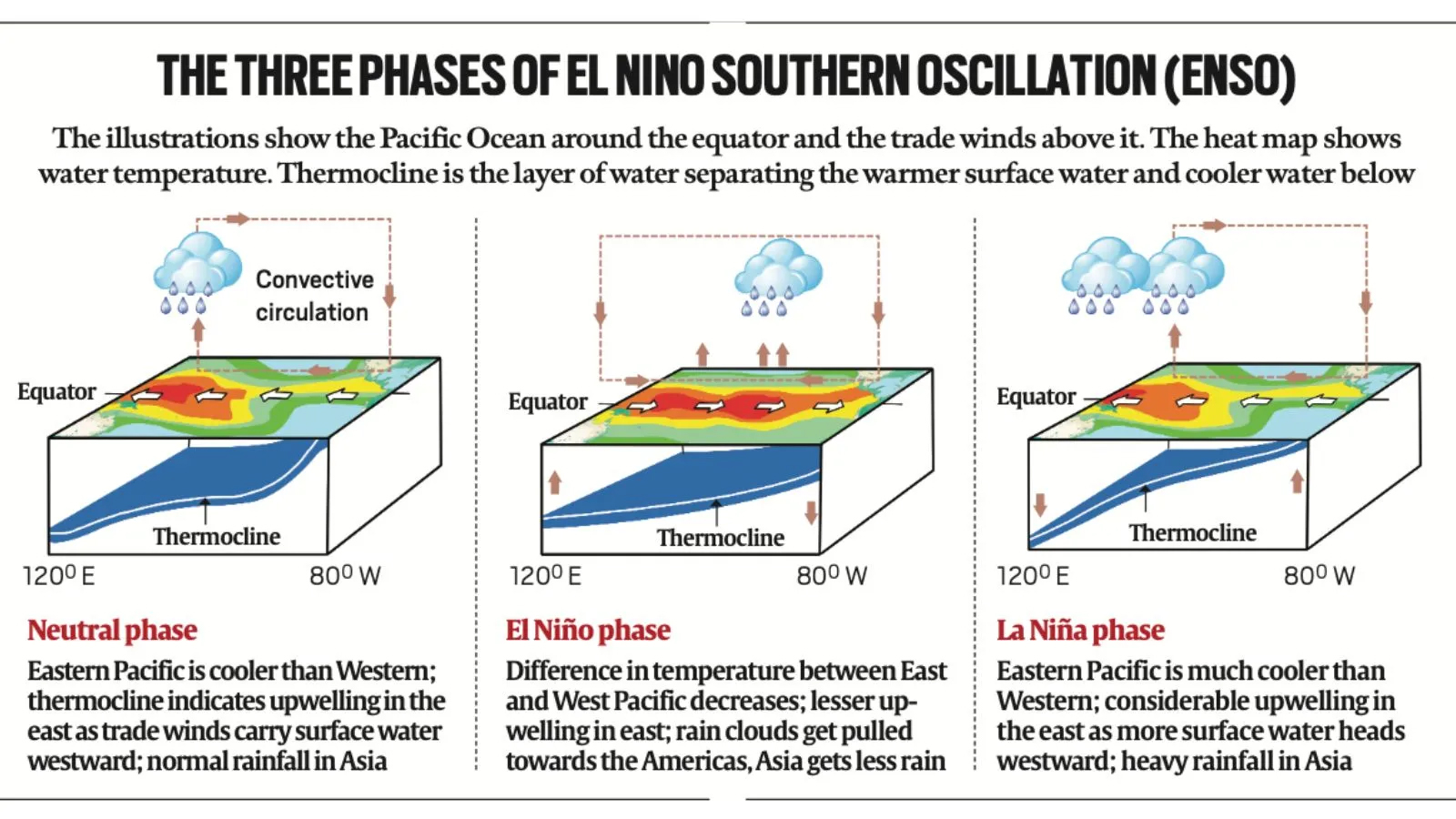- Home
- Prelims
- Mains
- Current Affairs
- Study Materials
- Test Series
La Nada
The El Niño-Southern Oscillation (ENSO) is a natural climate cycle characterized by periodic variations in sea surface temperatures and atmospheric conditions in the tropical Pacific Ocean. ENSO has three phases: El Niño (warm phase), La Niña (cool phase), and ENSO neutrality (neutral phase).
ENSO neutrality, also known as “La Nada,” occurs when the Pacific Ocean’s water temperature is neither significantly warmer nor cooler than average. During this phase, water temperature anomalies in the eastern and central Pacific are between 0.5 °C and -0.5 °C.

Key Characteristics
• Sea Surface Temperatures (SST): Close to average, with anomalies between 0.5 °C and -0.5 °C.
• Tropical Precipitation: Near-normal rainfall distribution.
• Wind Patterns: Typical wind patterns without significant anomalies.
Impacts of ENSO Neutrality
ENSO neutrality affects global weather patterns, similar to the more extreme phases of ENSO, but usually results in more typical seasonal weather.
In the United States
• Winter Weather: Normal winter weather patterns, with cold temperatures in the Midwest and warm, wet conditions in the South.
• Hurricane Activity: Normal levels of hurricane development.
Global Weather
ENSO neutrality influences weather patterns across the tropics and other parts of the world, impacting precipitation and temperature distribution.
The ENSO Cycle
ENSO is a coupled ocean-atmosphere phenomenon, meaning changes in sea temperatures affect atmospheric conditions and vice versa. This interaction between the ocean and atmosphere in the tropics results in the different phases of ENSO:
• El Niño: Characterized by warmer-than-average sea surface temperatures in the central and eastern tropical Pacific, leading to reduced rainfall in Indonesia and increased rainfall in the central and eastern tropical Pacific.
• La Niña: Opposite of El Niño, with cooler-than-average sea surface temperatures, increased rainfall in Indonesia, and reduced rainfall in the central and eastern tropical Pacific.
• ENSO Neutrality: The transitional phase with near-average conditions, occurring between the El Niño and La Niña phases.
Frequency
El Niño and La Niña typically occur every 3-7 years, with ENSO neutrality often acting as a transitional phase between these extremes.
ENSO neutrality, or La Nada, represents a balanced state in the ENSO cycle, with near-average sea surface temperatures, precipitation, and wind patterns. Understanding ENSO neutrality helps in predicting more typical seasonal weather patterns and recognizing the broader impacts of the ENSO cycle on global climate systems.









 Latest News
Latest News
 General Studies
General Studies